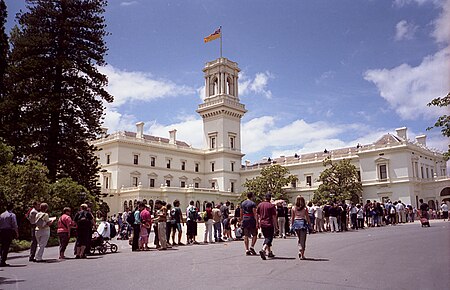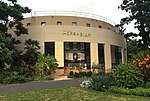Kings Domain

Kings Domain is an area of parklands in Melbourne, Victoria, Australia. It surrounds Government House Reserve, the home of the governors of Victoria, the Sidney Myer Music Bowl, and the Shrine Reserve incorporating the Shrine of Remembrance. The park was established in 1854, extending the Domain Parklands further north-west, it covers an area of 36 hectares of lawns and pathways set among non-native and native Australian mature trees, a mixture of deciduous and evergreens. In the 19th century the Kings Domain was managed by the Director of the Botanic Gardens, so many of the trees were planted by Baron Ferdinand von Mueller and later by William Guilfoyle. Around the Domain are scattered memorial statues and sculptures, each with their own story. Kings Domain is part of a larger group of parklands directly south-east of the city, between St. Kilda Road and the Yarra River known as the Domain Parklands, which includes; The Royal Botanic Gardens Kings Domain Alexandra Gardens Queen Victoria Gardens
Excerpt from the Wikipedia article Kings Domain (License: CC BY-SA 3.0, Authors, Images).Kings Domain
Government House Drive, Melbourne Melbourne
Geographical coordinates (GPS) Address Nearby Places Show on map
Geographical coordinates (GPS)
| Latitude | Longitude |
|---|---|
| N -37.8282598 ° | E 144.9775815 ° |
Address
Government House
Government House Drive
3004 Melbourne, Melbourne
Victoria, Australia
Open on Google Maps








